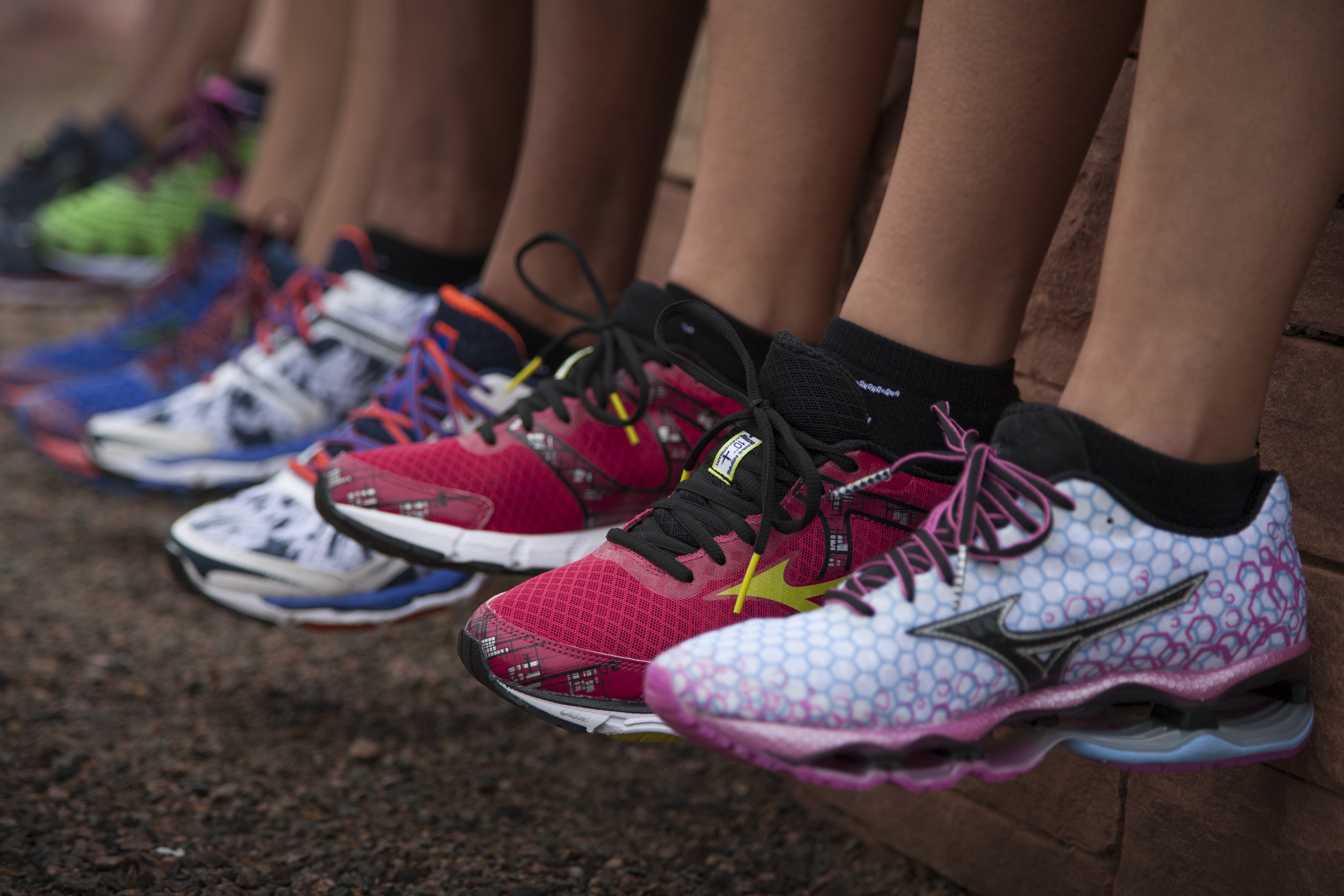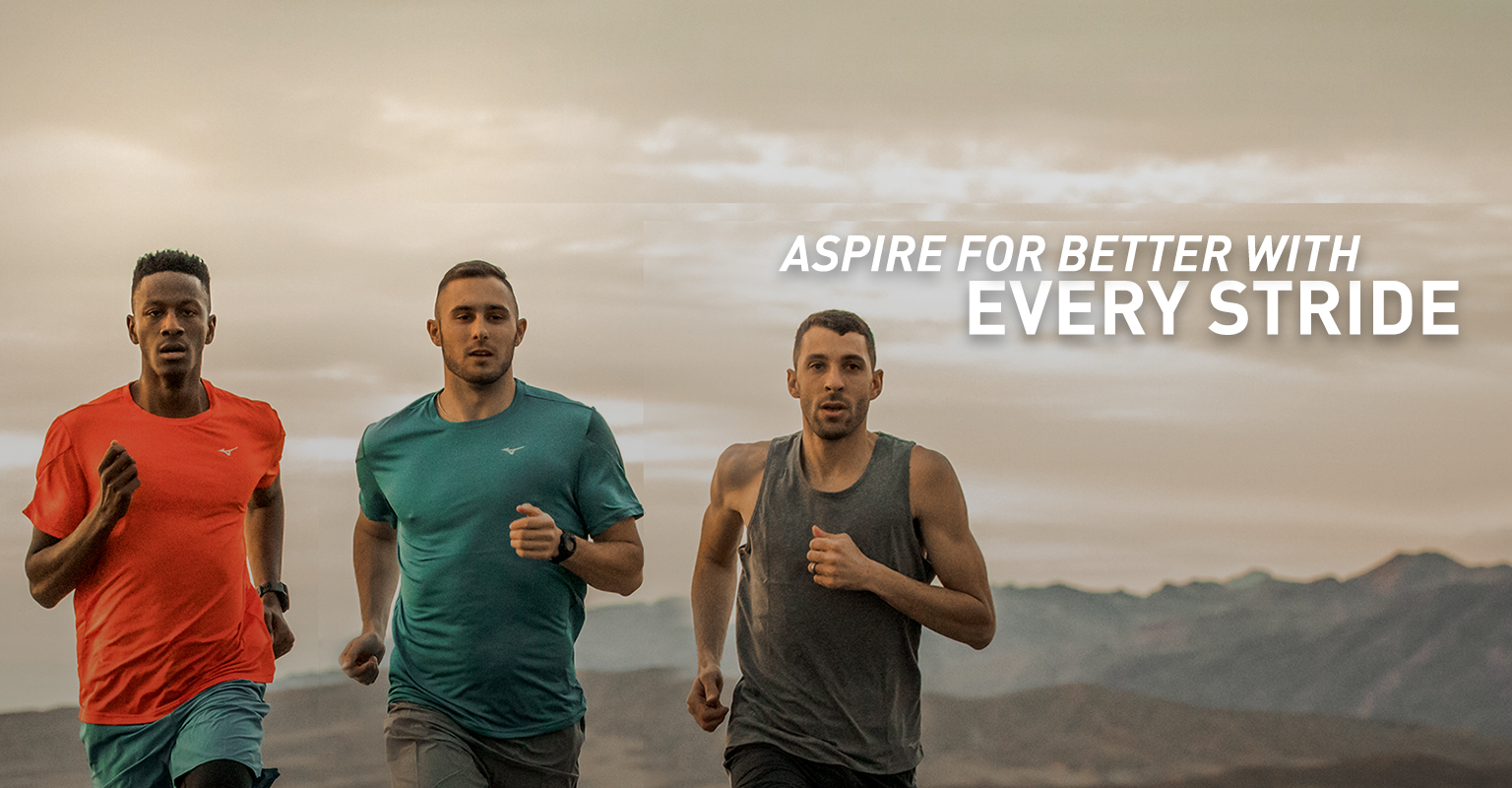
Finding the absolute perfect shoe for you (hopefully, a Mizuno) isn’t always easy. When you go into your favorite running store in search of the ideal shoe, you will be confronted with a huge wall full of all sorts of different brands and colorful models. There are so many that it can be somewhat intimidating, especially for a newbie who just wants to find a lightweight, comfortable shoe.
But even experienced runners can be confused by all the new shoe styles and models on the wall. And just when you have found the perfect Mizuno shoe for your running style, you go to your local store and find out all the running shoes—including your favorite—have been changed. Sound familiar?
Fortunately, even though Mizuno updates all its shoes on a regular basis, you are on familiar ground if you stick with the same model shoe you have worn in the past. Another words, a Mizuno Wave Rider—our most popular and enduring model—undergoes periodic improvements. For example, if you have worn and liked the Wave Rider 13 (last made in 2010), you should definitely try on the newest, lightest model—the Wave Rider 17—which maintains the fit and feel of this classic but with upgraded materials, fit and feel.
The 2014 Mizuno line of running shoes fall into one of six classifications. To clarify, here are the basic types of shoes and which type of runners is best suited for which type of shoe.
Here are the six basic shoe types, what they are and who they are for and the Mizuno shoes that are in each category:
Cushioned (or neutral) shoes:
This type of training shoe places an emphasis on cushioning, flexibility and smooth ride. This cushioned or neutral shoe usually has the highest level of cushioning (particularly in the rearfoot for good shock absorption upon heel strike). These shoes are the least stable or supportive of conventional training shoes, but are also the most flexible and responsive.
Best suited for: Runners who are biomechanically efficient (don’t overpronate) and often have a high or rigid arch. Also underpronators (don’t pronate enough) and fast, lean runners do well in these shoes.
Mizuno Options: Mizuno Wave Rider 17, Wave Creation 15, Wave Enigma 4 and Wave Prophecy 3.
Improvements for 2014: The Wave Rider 17 has a lighter, more cushioned midsole than the Wave Rider 16 and it is nearly a full ounce lighter which results in a quicker, smoother ride. Mizuno’s most popular model, the WR 17 is the lightest, most flexible Rider yet. Wave Creation 15 has exceptional cushioning and arch support. The 15 is also a half ounce lighter than the Creation 14 with a snug fitting upper. The Wave Enigma 4 is also lighter with a better fit and smoother ride. The Wave Prophecy 3, a unique shoe with a full mechanical midsole, also is significantly lighter and has a smoother, more dynamic ride with a propulsive feel to it.
Stability shoes:
Stability is synonymous with support. Stability shoes offer external and internal devices that will reduce overpronation (the distinctive inward roll which is a leading cause of injuries). Stability shoes generally have added support devices, a supportive upper and a midfoot shank or reinforcement to add torsional stability. Mizuno support shoes utilize a Fan Wave (or Double Fan Wave) to enhance medial (inner) support and reduce overpronation.
Best suited for: Runners who overpronate and/or need added medial (inner) support and stability. Runners with normal or flat arches. Bigger runners often prefer support shoes due to the added support and cushioning. Runners who wear orthotics generally do well in stability shoes.
Mizuno Options: Mizuno Wave Inspire 10 and Wave Paradox.
Improvements for 2014: The Wave Inspire 10 has a “moderate” level of support, but it’s substantially lighter, very flexible and a “quick” shoe. The Inspire 10 is one of the lightest support shoes on the market, but without sacrificing support. The Wave Paradox is Mizuno’s most supportive shoe (more supportive than the Inspire), but unlike most other maximum support shoes that tend to be heavy, firm and clunky, the Paradox is light and has the fast, cushioned feel runners enjoy.
Lightweight Performance Trainers:
As the name implies, these are lightweight shoes that are designed for runners who want to fly in training—or racing. These shoes have a performance fit and feel, are highly flexible, have breathable uppers and good toe spring. Performance trainers are generally about 2-3 ounces lighter than conventional training shoes but there is a tradeoff in cushioning, stability and durability. Some choose to use these shoes for daily training, although most runners usually wear lightweight performance trainers just for speed work or races.
Best suited for: Runners who train (or race) fast. Runners who don’t need a lot of stability or cushioning, but prefer an unencumbered, light, flexible ride.
Mizuno Options: Mizuno Wave Sayonara 2 (available 7-5-14).
Road-racing shoes:
Racers (or road-racing flats) are the sports cars of running. They are designed primarily for road-racing. Weighing between three and seven ounces, flats don’t offer as much much cushioning or support as conventional trainers and are generally not recommended for daily training (you’ll wear them out too quickly anyway). Flats have a low-profile midsole (the heel is lower) and a minimalist upper and outsole.
Best suited for: Serious racers who don’t want (or need) a shoe which will slow them down. Efficient, lightweight runners do best in flats.
Mizuno Options: Mizuno Wave Universe 5, Wave Ekiden, Wave Hitogami.
Improvements for 2014: The Wave Universe is the lightest (2.8 ounces for men’s size 9) shoe on the running market. It has minimal cushioning for maximum quickness and responsiveness. The Wave Ekiden (4.6 ounces) is also extremely light, designed for efficient runners who insist on a quick turnover. The Wave Hitogami (7.4 ounces for men’s size 9) has the best cushioning and support of the three racing shoes. With a broad base of support and a durable outsole, the Hitogami is suitable for tempo days and/or races in distances through the marathon.
Minimalist:
This type of shoe is characterized by lowered heel to toe ramps, minimal amount of cushioning and support. Runners who like minimal shoes prefer the less is more approach.
Best suited for: Biomechanically efficient runners (they don’t overpronate) who prefer a good road “feel” and don’t want (or need) traditional cushioning or heel heights.
Mizuno Options: Mizuno Wave Universe 5, Wave Ekiden, Wave Hitogami.
Improvements for 2014: The Wave Universe is primarily a racing shoe, but it has become a popular shoe with minimalist runners due to its extreme light, unrestricted ride. The Wave Ekiden has also gained wider acceptance as a training shoe because of its light, smooth ride. The Wave Hitogami is cushioned enough for daily training, but light enough for serious road racers.
Trail:
These shoes are designed for off-road running with added outsole traction and good cushioning.
Best suited for: Trail and/or adventure runners who placed a premium on exceptional traction and a low-to-the-ground, adaptable shoe.
Mizuno Options: Wave Kazan, Wave Hayate.
New for 2014: Both shoes were designed specifically for all-terrain running. With a trail-specific upper, both shoes are well-balanced, comfortable and offer excellent traction. The difference between the two shoes is the WaveKazan has conventional heel heights (12 mm) and is suitable for limited surface street running to the trail. The Wave Hayate has lower heel heights (9 mm) and is lighter than the Kazan so you have a secure fit and trail feel which allows you to to forget you have shoes on.
